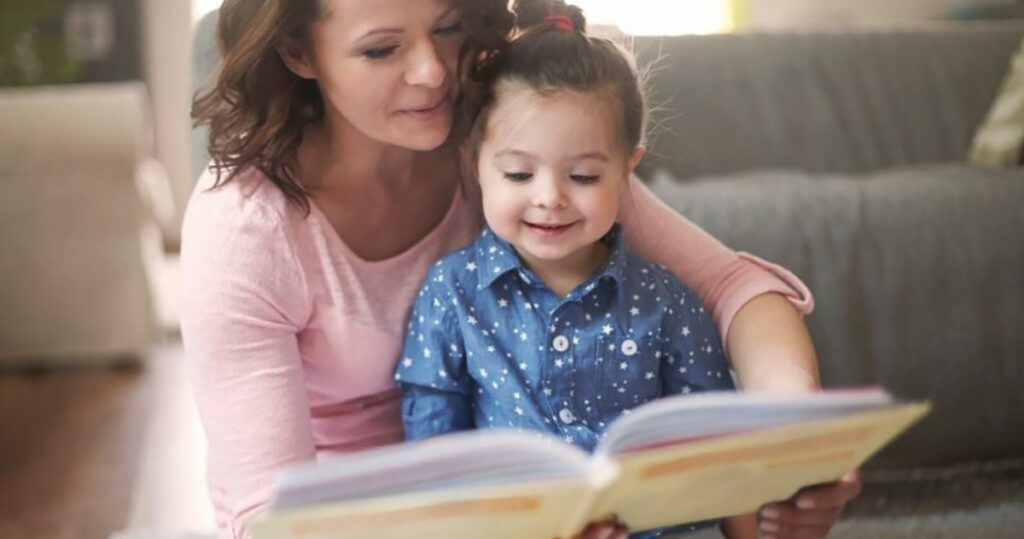How to teach a child to read: Important tips
It’s been so long since most of us were literate that we don’t remember the techniques the teacher used to teach reading. So, if you are looking to learn how to teach a child to read, here are some simple tips to put into practice in everyday life, even when playing.
Anúncios
1. Letters, drawings and symbols: show the differences
For the child who is not literate, there is still no difference between letters, drawings and symbols. So it’s up to you to start showing the differences.
It’s like when you need to understand what is written in a completely different language, with another alphabet, like Japanese or Russian. You won’t be able to understand because you don’t even know how to differentiate what letters, drawings or symbols are there in the middle.
The logic for the illiterate child is the same. Use pictures (drawings, photos) to explain the meaning of words and show which letters they are written with. You can do this in a playful way, when the opportunity arises and the child is interested.

2. How to teach a child to read- Show reading order
For someone who has been literate for so many years, it seems obvious to start reading from left to right. But how to teach a child to read without telling him that the reading of a word starts from the left and goes to the right? Remember this.
3. How to teach a child to read – Teach the alphabet
This tip is easy because children’s songs that teach the alphabet are usually present from the baby’s first months.
But by the time your child is close to school age, you can teach them the written alphabet, not just the spoken one. Show the letters in the right order and use the songs to help the child memorize.
One more tip is to use those rulers with leaked letters and other teaching materials that help to draw the letters for the child to practice and get used to their muscle memory for writing.
4. Teach vowels and phonemes logically
Start with syllables that have easy-to-pronounce consonants, such as “F, L, M and S”. Explain to the child that when we put the letters “F” and “A” together, we form “FA”. If we join “F” with “E”, we form “FE”, and so on:
FA – FE – FI – FO – FU
Then, present words formed by these syllables (KNIFE, FOCA, PHOTO…) and explore them through games, written and oral exercises.
When you are saying the words, always make the sound of each letter clear and ask the child to repeat those sounds and the writing of the corresponding letters.
The idea is that the child understands that the purpose of syllables is to serve as the basis of “blocks” for the formation of words.
5. Teach to write the name
The child will already be very confident with the vowel and phoneme learning exercise, understanding the formation of syllables. The next step to get her even more interested is to teach her how to write her own name.
You can just dictate the words or write the name on a sheet and ask the child to write the same below, showing him what those letters are and the sound of each one.
6. Encourage reading
It becomes easier to know how to teach a child to read when you realize that you are their greatest example. If you let the child see your interest in reading, chances are good that he will be interested too.
In addition to letting the child know and explore physical books, encourage reading everywhere, at home and on the street, on signs, advertisements, labels, in everything.
7. Encourage writing
When the child is already able to form some words consciously, knowing what he is writing, encourage the production of stories that the child can invent and then tell, or an exchange of several notes between you to practice writing.
How to teach a child to read – Benefits of reading in childhood
Faced with the difficulties that parents find for their children to enjoy reading, it is necessary to ask the following question: is this really necessary? Why should children read?
Reading short stories, books, comics or magazines has many benefits for the child. In our article today we tell you what advantages the child gets when he has the habit of reading.
- Pleasure: the child can find a real passion in books and a hobby that will give him great pleasure.
- Creativity: books are tools that allow children to travel to other places, to transport themselves to other dimensions where they can imagine through words, when they become the protagonists of stories. This is precisely where creativity, imagination and fantasy come in.
- Language skills: the child learns new vocabulary, to use language correctly and even to write without spelling problems.
- Exercise the brain: the desire for reading is a task that represents a certain complexity for the brain, so the child will be stimulating skills such as memory or knowledge.
- Knowledge of the world: the books themselves are a learning experience, since the child can know about the world almost without realizing it as he turns the pages.
- Knowing others: Books help children to put themselves in others’ shoes, to get to know other people’s feelings and points of view. This makes the child work on empathy and be more flexible.
- Strengthens the ability to concentrate and attention: the child who concentrates on the pages of a book increases his ability to concentrate.
- Practice mechanical reading and comprehensive reading: this has a very direct impact on your school performance. A child who reads well studies better and therefore has better academic results.
- Increases her curiosity: she asks more questions, feels more restlessness and wants to keep eating, seeking more information and finding more answers.
- A faithful friend for life: the child who acquires the habit of reading will have a companion where he can find answers or comfort in good and bad times. Precisely, in those moments when the child has difficulties, the reader can find relief or solace that he may not find in his environment.


